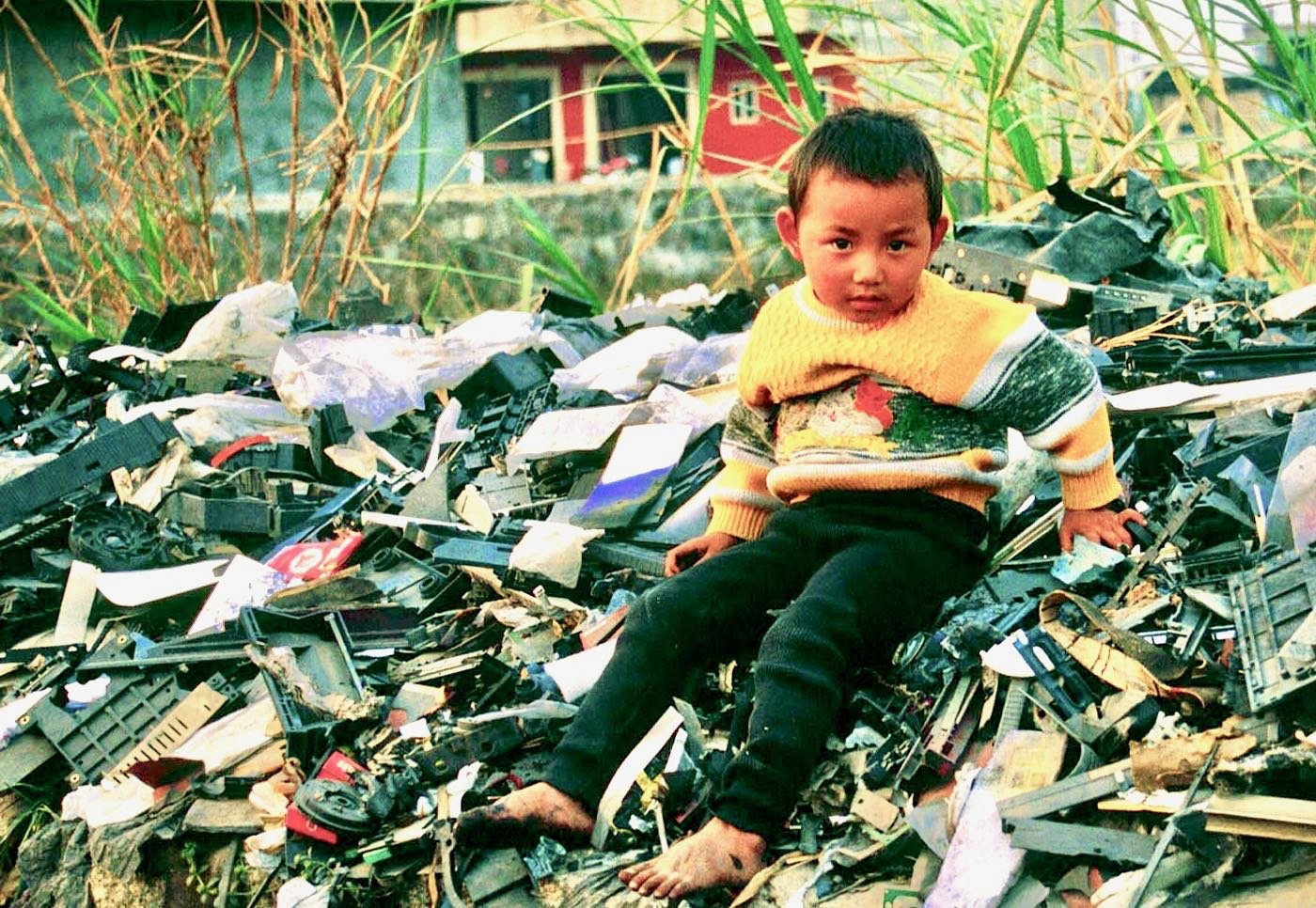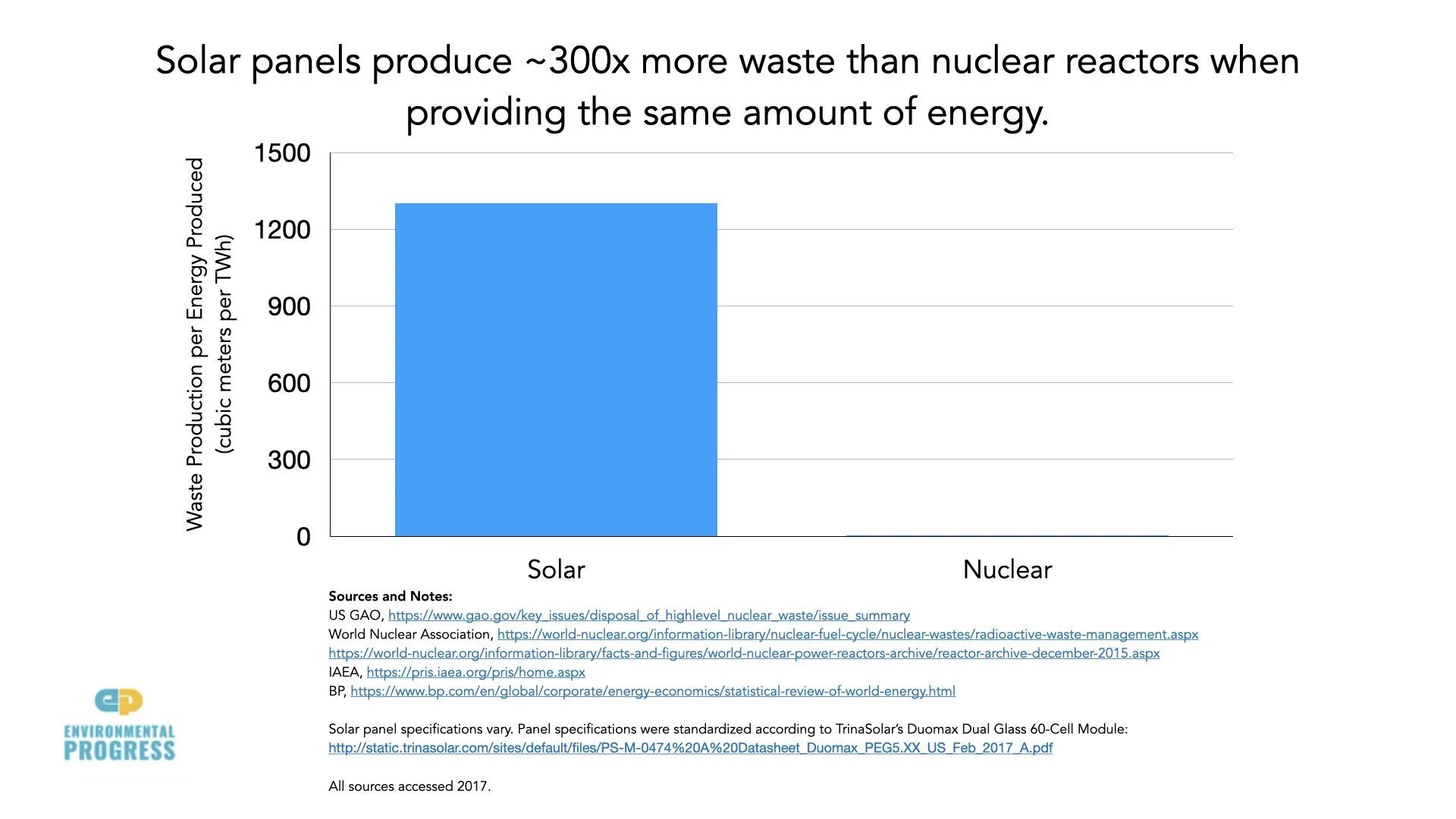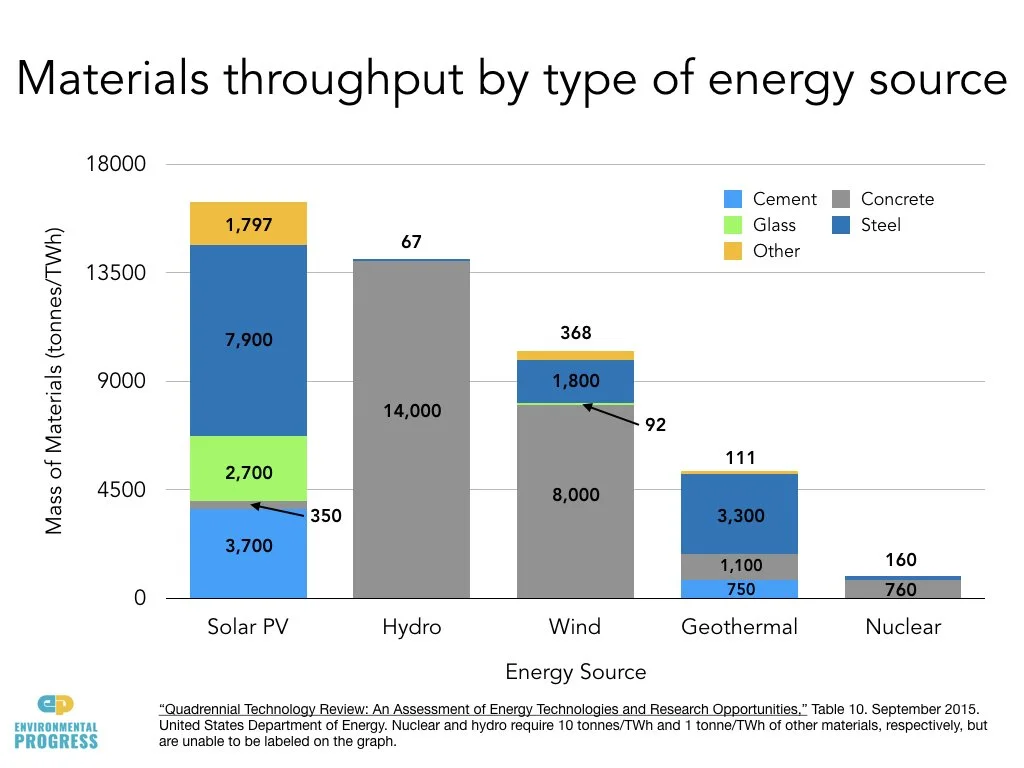Are we headed for a solar waste crisis?
Boy in Guiyu, China, atop a pile of electronic waste. Creative Commons, Basil Action Network, 2017.
June 21, 2017
By Jemin Desai and Mark Nelson
Last November, Japan’s Environment Ministry issued a stark warning: the amount of solar panel waste Japan produces every year will rise from 10,000 to 800,000 tons by 2040, and the nation has no plan for safely disposing of it.
Neither does California, a world leader in deploying solar panels. Only Europe requires solar panel makers to collect and dispose of solar waste at the end of their lives.
All of which raises the question: just how big of a problem is solar waste?
Environmental Progress investigated the problem to see how the problem compared to the much more high-profile issue of nuclear waste.
We found:
Solar panels create 300 times more toxic waste per unit of energy than do nuclear power plants.
If solar and nuclear produce the same amount of electricity over the next 25 years that nuclear produced in 2016, and the wastes are stacked on football fields, the nuclear waste would reach the height of the Leaning Tower of Pisa (52 meters), while the solar waste would reach the height of two Mt. Everests (16 km).
In countries like China, India, and Ghana, communities living near e-waste dumps often burn the waste in order to salvage the valuable copper wires for resale. Since this process requires burning off the plastic, the resulting smoke contains toxic fumes that are carcinogenic and teratogenic (birth defect-causing) when inhaled.
The study defines as toxic waste the spent fuel assemblies from nuclear plants and the solar panels themselves, which contain similar heavy metals and toxins as other electronics, such as computers and smartphones.
To make these calculations, EP estimated the total number of operational solar panels in 2016 and assumed they would all be retired in 25 years — the average lifespan of a solar panel. EP then estimated the total amount of spent nuclear fuel assemblies that would be generated over a 25 year period. EP then divided both estimates by the quantity of electricity they produced to come up with the waste per unit of energy measure.
While nuclear waste is contained in heavy drums and regularly monitored, solar waste outside of Europe today ends up in the larger global stream of electronic waste.
Solar panels contain toxic metals like lead, which can damage the nervous system, as well as cadmium, a known carcinogen. Both are known to leach out of existing e-waste dumps into drinking water supplies.
The deployment of solar has increased significantly in recent years in response to government subsidies and mandates. Global installed capacity more than doubled between 2012 and 2015.
In 2016, solar provided 1.3% of the world’s electricity, with 301 GW installed. Nuclear reactors provided 10% of the world’s electricity in the same year.
A recent report found that it would take 19 years for Toshiba Environmental Solutions to finish recycling all of the solar waste Japan produced by 2020. By 2034, the annual waste production will be 70 - 80 times larger than that of 2020.
Methodological notes:
“Solar” in this analysis exclusively refers to solar photovoltaic.
For the analysis, EP assumed that each solar panel would last 25 years
EP estimated that a typical 1 GW nuclear reactor produces 27 tonnes of waste annually.
EP assumed that, worldwide, each nuclear reactor has a similar burnup.
Capacity factors for solar PV and nuclear are derived from 2016 reports from BP Statistical Review of World Energy and IAEA PRIS and are assumed to remain constant over the 25 year period calculated.
Nuclear share of world electricity was calculated by dividing world nuclear electricity generation by total world electricity generation.
Solar panel specifications were standardized according to TrinaSolar’s Duomax Dual Glass 60-Cell Module.
Jemin Desai is an EP Fellow and a student at UC Berkeley. Mark Nelson is EP Senior Researcher.


